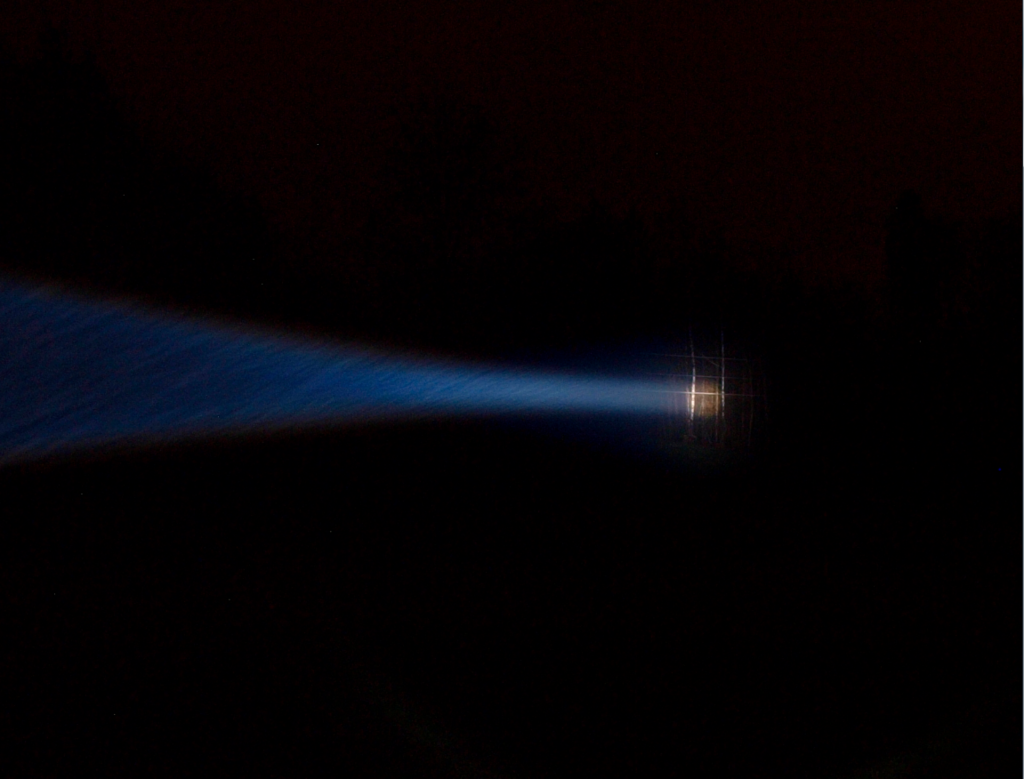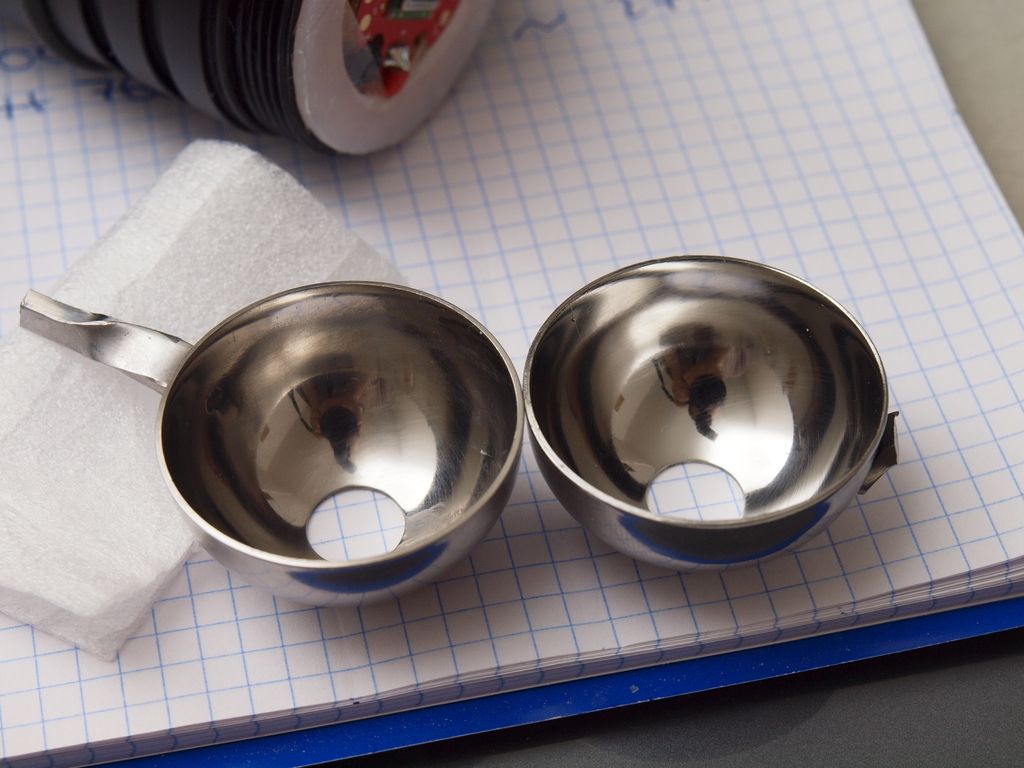Cajampa,
The reflective aperture does not change the position of the starting plane of focus remember, which is the die, so the reflective aperture can be left out of the thought process when thinking about the bending of light rays at least. It is just a “freebie gain” in the system you might say. Now, as far as optical setups go, it is true that there are laws in physics stating that adding lenses together will not increase throw, even if there is zero loss through each lens. The problem is, these are laws to assume in a perfect environment, which often does not exist. Because no single lens yet that I have found is perfect, sometimes arrays of lenses can outperform the available single lens. That is the theory which I use, and based on simple logic can be quite obvious a theory. I say obvious, because the optical quality of some lenses are so imperfect a mate to an LED, that the image alone tells us the light can be bent more effectively into one image. This is what typically starts the arguments between some as they turn to formulas and say that addition of lenses only results in a larger image. Those theories only hold true when there is nothing left to gain. I find there is usually something left to gain. The idea of the aspheric lens itself documents this. Its curvature is not defined specifically, such as one radius in a spherical (convex) lens. Different aspheric curvatures result in different ray trace profiles when that lens is then analyzed in the real world. By adding a meniscus lens behind another lens, the net ray trace profile resulting thus varies. So it can be seen as essentially creating different aspherical curvatures through the combination of these multiple lenses. (If camera manufacturers listened to some of the “light experts” on the forums, then your cameras might end up with one lens which moves back and forward. See what your pictures look like then.  ) When a person cannot create their own single aspheric lens in their garage, that person’s only real option is in fact to add different lenses together. What I have just explained is the difference between a perfect world of physical law and formula, and the realistic world of the manufacturer creating the lens. In the perfect world, a perfect profile exists for one LED shape, and a perfect lens could be made for it. Notice how I keep using the word perfect to emphasize that it’s not likely going to happen.
) When a person cannot create their own single aspheric lens in their garage, that person’s only real option is in fact to add different lenses together. What I have just explained is the difference between a perfect world of physical law and formula, and the realistic world of the manufacturer creating the lens. In the perfect world, a perfect profile exists for one LED shape, and a perfect lens could be made for it. Notice how I keep using the word perfect to emphasize that it’s not likely going to happen.  Now, going right back to what you had asked, not only could you place a meniscus lens behind the aspherical lens, you could even place a larger meniscus lens in front of it, too.
Now, going right back to what you had asked, not only could you place a meniscus lens behind the aspherical lens, you could even place a larger meniscus lens in front of it, too.  Now you have created a new system focal length, with new diameter. If the final optic diameter grows, it can be assumed that the light gathering of that system has now also grown with it. As if this weren’t enough to think about, the starting meniscus lens will perform better in the optical system when turned in one direction, vs the other direction. It is all relative to the way an LED emits light from its square die surface. I am a believer that a round die is optically better suited to a round lens. The problem is that, the specific LED technologies vary between those who make the round dies, and those who make the square dies; I.E. Cree and Luminus. It would be nice to see Cree have a round die high-performance chip paralleling the XP-E2/XP-G2, with same Cd/mm² intensity across similar total and flat die area. The reality is, it may simply not be possible based on their manufacturing processes, or manufacturing choices (as more dies can be made from squares than circles, this trickles down to consumer costs to buy the LED if the MFGR were to choose a different die shape). Yes, that is quite a side-tracked notation to encompass from your question, but something to consider as we note how the real world products may differ from “perfect”.
Now you have created a new system focal length, with new diameter. If the final optic diameter grows, it can be assumed that the light gathering of that system has now also grown with it. As if this weren’t enough to think about, the starting meniscus lens will perform better in the optical system when turned in one direction, vs the other direction. It is all relative to the way an LED emits light from its square die surface. I am a believer that a round die is optically better suited to a round lens. The problem is that, the specific LED technologies vary between those who make the round dies, and those who make the square dies; I.E. Cree and Luminus. It would be nice to see Cree have a round die high-performance chip paralleling the XP-E2/XP-G2, with same Cd/mm² intensity across similar total and flat die area. The reality is, it may simply not be possible based on their manufacturing processes, or manufacturing choices (as more dies can be made from squares than circles, this trickles down to consumer costs to buy the LED if the MFGR were to choose a different die shape). Yes, that is quite a side-tracked notation to encompass from your question, but something to consider as we note how the real world products may differ from “perfect”.
DBCstm,
Let me ask you this first. When you try a domed, stock-form XP-G2 on same pad height in the others place, is the light in better focus vs the de-domed one?
The dome itself is essentially a very low quality meniscus lens (with a void filler gel), and it can be used when still attached to test for a couple mm worth of focal length. Though the effect it has for that test will be greater with a lower FL lens in front of it. One thing you can do for a higher FL lens, would be to simply take a convex-convex, or plano convex, with long positive FL, say 25mm diameter by 100mm up to 150mm FL, start it very near the LED, then move it forward in small amounts if you believe your focus to be off by only a few mm. But as soon as light can pass this small lens and hit the larger lens, the original image will start being drawn again. So you must keep all light going through this smaller lens and it will only net you maybe 10-15mm worth of test room. This would be another quick-test method, anyways. Just remember the lens you decide to implement, should allow no light restriction from the final output lens in the place you mount it.
LinusHofmann,
Gains can be as high as 50% using reflective apertures, possibly more, but relative to the die technology and kelvin range of the LED also. The larger the aperture, the better the image re-creation will be. But of course, it can only get so big and still remain practical to fit inside the body. But the larger, the better. I would say a practical number to aim for through general garage methods would be 25% lux increase.
I hope this sheds some light. 
![]() thanks
thanks![]()
![]()




